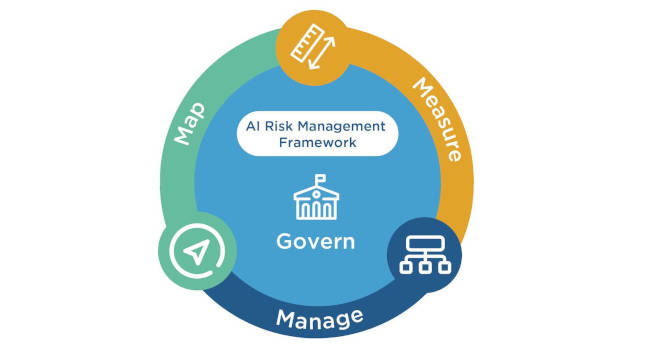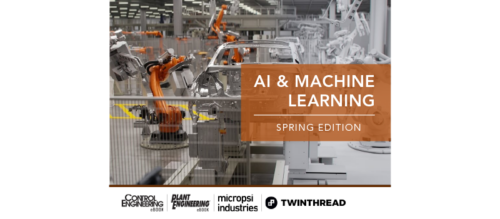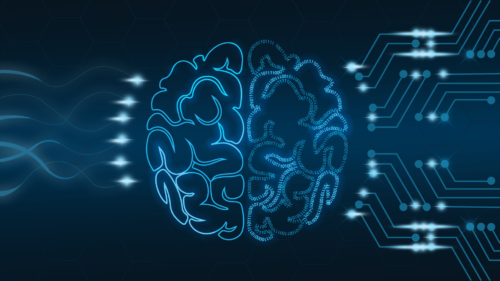AI risk management framework released
NIST released their artificial intelligence (AI) risk management framework as part of a larger effort to build and instill trust in AI with the greater public.
Artificial intelligence insights
- The Artificial Intelligence Risk Management Framework (AI RMF 1.0), from NIST is a guidance document to help organizations manage the many risks of AI technologies.
- This is part of a larger effort by NIST and the U.S. government to help build and instill public trust in AI as its use continues growing in many different applications. This is a necessary effort as ChatGPT and other programs have been thrust into the spotlight and shown the double-edged nature AI programs can potentially offer.
The National Institute of Standards and Technology (NIST) has released its Artificial Intelligence Risk Management Framework (AI RMF 1.0), which is a guidance document for voluntary use by organizations designing, developing, deploying or using artificial intelligence (AI) systems to help manage the many risks of AI technologies.
The AI RMF follows a direction from Congress for NIST to develop the framework and was produced in close collaboration with the private and public sectors. It is intended to adapt to the AI landscape as technologies continue to develop, and to be used by organizations in varying degrees and capacities so that society can benefit from AI technologies while also being protected from its potential harms.
“This voluntary framework will help develop and deploy AI technologies in ways that enable the United States, other nations and organizations to enhance AI trustworthiness while managing risks based on our democratic values,” said Deputy Commerce Secretary Don Graves in a press release.
Compared with traditional software, AI poses a number of different risks. AI systems are trained on data that can change over time, sometimes significantly and unexpectedly, affecting the systems in ways that can be difficult to understand. These systems are also “socio-technical” in nature, meaning they are influenced by societal dynamics and human behavior. AI risks can emerge from the complex interplay of these technical and societal factors, affecting people’s lives in situations ranging from their experiences with online chatbots to the results of job and loan applications.

NIST released their artificial intelligence (AI) risk management framework as part of a larger effort to build and instill public trust. Courtesy: N. Hanacek/NIST
Purpose, structure of the AI RMF
The framework equips organizations to think about AI and risk differently. It promotes a change in institutional culture, encouraging organizations to approach AI with a new perspective — including how to think about, communicate, measure and monitor AI risks and its potential positive and negative impacts.
The AI RMF provides a flexible, structured and measurable process that will enable organizations to address AI risks. Following this process for managing AI risks can maximize the benefits of AI technologies while reducing the likelihood of negative impacts to individuals, groups, communities, organizations and society.
The framework is part of NIST’s larger effort to cultivate trust in AI technologies, which is necessary if the technology is to be widely accepted according to Under Secretary for Standards and Technology and NIST Director Laurie E. Locascio.
“The AI Risk Management Framework can help companies and other organizations in any sector and any size to jump-start or enhance their AI risk management approaches,” Locascio said. “It offers a new way to integrate responsible practices and actionable guidance to operationalize trustworthy and responsible AI. We expect the AI RMF to help drive development of best practices and standards.”
The AI RMF is divided into two parts. The first part discusses how organizations can frame the risks related to AI and outlines the characteristics of trustworthy AI systems. The second part, the core of the framework, describes four specific functions — govern, map, measure and manage — to help organizations address the risks of AI systems in practice. These functions can be applied in context-specific use cases and at any stages of the AI life cycle.
Working closely with the private and public sectors, NIST has been developing the AI RMF for 18 months. The document reflects about 400 sets of formal comments NIST received from more than 240 different organizations on draft versions of the framework. NIST today released statements from some of the organizations that have already committed to use or promote the framework.
The agency also released a companion voluntary AI RMF Playbook, which suggests ways to navigate and use the framework.
NIST plans to work with the AI community to update the framework periodically and welcomes suggestions for additions and improvements to the playbook at any time. Comments received by the end of February 2023 will be included in an updated version of the playbook to be released in spring 2023.
– Edited from a NIST press release by CFE Media and Technology.
Do you have experience and expertise with the topics mentioned in this content? You should consider contributing to our CFE Media editorial team and getting the recognition you and your company deserve. Click here to start this process.






